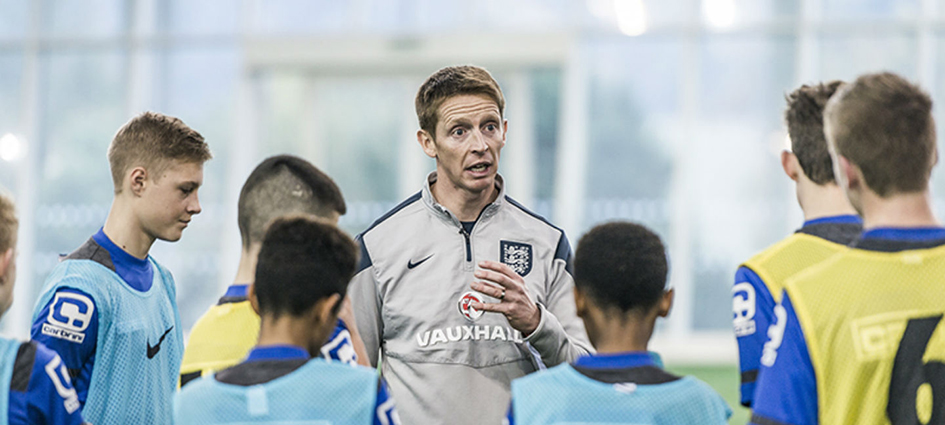
How to use constraints in your coaching session
- Ben Bartlett
- 17 October 2019
Former FA youth coach developer, Ben Bartlett, outlines how a constraints-led approach to practice design can aid player development.
The production of playbooks – which often include pages of sessions and describe particular plays that players should run in games – can be guilty of seeking to oversimplify the complex nature of coaching football to human beings.
Complex activities require complex, multi-faceted programmes of learning that embrace variety such as risk and safety, unopposed and opposed practice and telling and discovery coaching approaches.
In previous articles on The Boot Room, an alternative approach to practice design and supporting players to play the game was proposed. Coaches were encouraged to consider how a constraints-led approach to coaching football could be combined with a flexible structure for practice sessions and games programmes. The purpose of the discussion was to help enable coaches to design varied, responsive football activity to support the perceived individual needs of players and coaches.
The considered approach to practice design functioned at three different levels. Let's take a closer look.
1. Principles of practice design
Practice to be inclusive of 'The Four Ds', see below:

2. Four ingredients coaches can experiment with – and combine
- Pitch type: select from big, small, narrow or wide.
- Player distribution: how we distribute the players to link to the systems or strategies we choose to deploy.
- Parameters: determine the pitch markings that can be used to guide or limit the movements that the players can make.
- Player constraints: decide how we intend to challenge players’ actions and decisions using the 3 Rs: restrict, reward and relate (see image below for definitions).

3. Examples of games
The tables below provides some examples of how the principles and ingredients can be combined.
The three levels of thinking afforded by this 'lighter-footprint' approach, can support coaches to work from more abstract principles to build their own ideas. Similarly, there's also the option to use some example 'practice recipes' when time or experience are limited.
In addition to the above, we'd encourage you to consider:
Football is a competitive sport. Supporting the players to think about and learn how to win (and how to behave when we don’t) is a key aspect of development. The table above includes examples of how we might constrain games to afford players the opportunity to manage the momentum of the game.
The games programme can provide us with opportunities to coach the players (similar to training sessions). We ran a tournament in Spring 2016, which used a ‘must-win’ constraint. The competition offered three points for a win and zero points for a draw or defeat. This afforded players the opportunity to think of the tactics they use to ensure they win the game. Interestingly, all six games (which were fifteen minutes in duration) finished 1-0. This was possibly, in part, due to the way teams played until the first goal was scored and the emotional impact of going behind.
The idea of the pitch being smaller or narrower than ‘normal’ can sometimes be met with the view that it is unrealistic and removes some of the principles of the game of football. However, consider the value of the overload principle on decision-making (cognition). Overload refers to the amount of load/stress we place on the body/brain than it is normally accustomed to in order to improve its function. If we make decision-making harder (due to limiting space and time) than normal, does it enable us to improve player’s decision-making ability?
The value of individual practice is unquestionable. This can often be perceived as needing to be completed individually or in a small group. Tasking or constraining players individually within a squad practice can afford players the opportunity to practise something unique to them within the context of the game.
For example, I recently worked with a number 10 who had a tendency to set back when the ball came to his feet, missing opportunities to receive, turn and threaten the opposition. We constrained him to ‘no one-touch passes backwards’. This meant if he played backwards it is likely he would slow the game down (which might be the best decision) and led to him receiving on the turn and turning on his first touch, benefiting not only further development of his techniques and decisions but also the physical movements he made.
This article was first published in The Boot Room magazine in September 2017.




